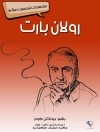Realism is an essential concept in literary studies, yet for a variety of reasons it has not received the attention and clarity it deserves, often being dismissed as ‘too slippery’ to be of use. This accessible study remedies that failing for students and scholars of English Literature and Literary Theory alike, plainly setting out what realism is, the issues surrounding it, and its role in other major literary modes such as modernism and postmodernism.
Beginning Realism gives detailed coverage of the nineteenth-century realist novel through its focus on novels by Gaskell, Eliot, Trollope, Dickens, Mrs Oliphant, Thackeray and Zola. As well as discussing ‘the novel’, the book also includes chapters on the use of realism in drama and poetry and a chapter on ‘the language of realism’, another aspect often overlooked in analysis of the concept.
Table of Content
Acknowledgments
Introduction
1. The Nineteenth-Century Realist Novel: Two Principles
2. The Nineteenth-Century Realist Novel: Particulars
3. Problems in Defining the Realist Novel
4. The Idea of Poetry
5. Realist Drama
6. Modernism
7. Before, During, and After Postmodernism
Interlude
8. Theorists of Realism
9. The Language of Realism
10. Philosophy, Science, and the Ends of Realism
Index
About the author
John Mc Leod is Lecturer in English at the University of Leeds












